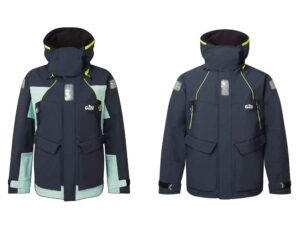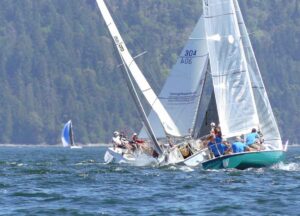
GearUpGarminGeko
For this year’s Boat of the Year competition, we asked Garmin to lend us a few handheld GPS units. Being brand-new, many of the boats we test either have no instruments, or the ones they have haven’t been calibrated. Garmin was kind enough to send us one of their smallest and newest models, the Geko 201, which proved to be a terrific addition to our testing. Smaller than most cell phones, at 3.9″ x 1.9″ x .96″, and weighing in at a feather-light 3.1 ounces (including its two AAA batteries), the Geko 201 is still packed with features. It will store 10,000 track points, 500 waypoints, and 20 routes. Thanks to its capability to receive Wide Area Augmentation Signals in addition to satellite data, the Geko 201 can be accurate to 10 feet or better. The Geko doesn’t contain any map or chart data, but it’s perfect for users looking for a backup GPS system with simple track-back capabilities, or for those who are just curious to see where they’ve been. One of the features we appreciated the most about the 201 was the very brief time needed for the Geko to acquire signals from satellites and WAAS stations. Even from a cold start (where the GPS has no idea where in the world it is when you turn it on), it took less than one minute for the Geko to figure out it was in Annapolis. Warm starts (the GPS keeps a snapshot of the satellite constellation from the last start, so it knows what satellites to look for when re-started) were even quicker, ranging from 5 to 30 seconds. Battery life is OK; after a 10-hour day on the water, it’s time to replace the batteries. The designers at Garmin included a battery power icon, which keeps you aware of how much juice is left. With only five buttons, the Geko 201’s interface is user-friendly, especially if you’re an experienced GPS user. The screen, while small at 64 by 100 pixels, is of a high-enough resolution that it’s easy to see, even in direct sunlight. Thanks to a fast update rate (every one second, continuous) speed and location data are deadly accurate. The Geko is waterproof for up to 30 minutes in three feet of water (IEC 529 IPX7 standards). In other words, it’ll be fine for use in the rain, or on a wave-swept deck. The neatest thing about the Geko 201 is its size. Out of the three items of electronics I had to carry as we moved from boat to boat during our BOTY on-the-water testing (a handheld VHF and a micro cassette recorder were the other two), the Geko was the smallest, and weighed me down the least. This is a perfect handheld GPS for a ditch bag, a small raceboat, or even a dinghy. The Geko 201 retails for $149, but you’ll find lower prices on the Internet. The one accessory we’d add to the unit is the data cable that connects the Geko to a computer and navigation or mapping software. Adding that capability expands the Geko’s horizons and makes up for the fact that it carries no map or charting data. You can use your computer’s nav software to import any routes and waypoints you might need. Our one eternal quibble with Garmin is the company’s refusal to acknowledge that very few computers these days have serial ports. The Garmin data cable for the Geko ends in an RS 232 (serial port capable) plug. In order to transfer data in and out of a computer without a serial port, you need to drop almost 60 bucks on an RS 232 to USB converter cable. www.garmin.com









